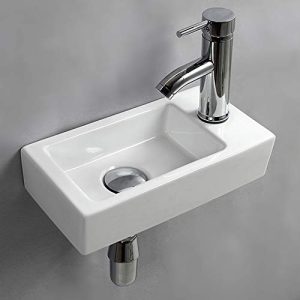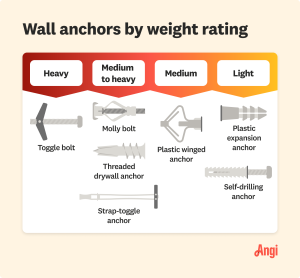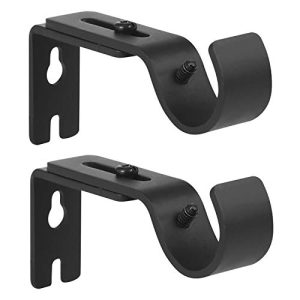Want to add style and extra storage to your space but don’t have studs where you want to hang your floating shelf? You’re not alone.
Hanging a shelf without studs can feel tricky and risky, but it doesn’t have to be. Imagine having a strong, secure shelf holding your favorite books or decor, all without hunting for studs or drilling into tricky spots. In this guide, you’ll learn simple, effective steps that anyone can follow.
By the end, you’ll have the confidence to hang your floating shelf safely and beautifully, making your room look just the way you want. Ready to get started? Let’s dive in!

Credit: www.christeneholderhome.com
Choosing The Right Floating Shelf
Picking the right floating shelf is key to a safe and attractive setup. This guide covers important points about materials, weight limits, and design choices.
Knowing these basics helps you find a shelf that fits your wall and holds your items securely without needing studs.
Materials And Weight Limits
Floating shelves come in various materials. Each material has a different strength and weight capacity. Choose one that matches what you want to store.
| Material | Typical Weight Limit | Notes |
|---|---|---|
| Solid Wood | 20-30 lbs | Strong and durable for most items |
| MDF (Medium-Density Fiberboard) | 10-15 lbs | Good for light decorations |
| Metal | 25-40 lbs | Best for heavy items and modern styles |
| Glass | 10-20 lbs | Fragile but stylish; hold light objects |
Shelf Design Options
Floating shelves come in many designs. The style you choose affects the look and function of your space.
- Simple rectangular shelves fit most rooms and uses.
- Curved or rounded edges add a soft, modern touch.
- Thick shelves hold heavier items better than thin ones.
- Shelves with hidden brackets offer a clean look.
- Open designs show off the wall behind the shelf.
Tools And Supplies Needed
Hanging a floating shelf without studs is a common task. It requires the right tools and hardware to ensure it is secure.
This guide will help you gather the essential tools and recommended hardware. It will make your task easier and more efficient.
Essential Tools
Using the right tools is important for a successful installation. These tools will help you hang the shelf securely.
- Drill with drill bits
- Level
- Measuring tape
- Pencil
- Screwdriver
Recommended Hardware
The right hardware ensures your shelf stays in place. Choose hardware that can support the weight of the shelf and its contents.
- Wall anchors
- Toggle bolts
- Brackets
- Screws
Preparing The Wall Surface
Hanging a floating shelf without studs needs a strong wall surface. Preparing the wall helps the shelf stay safe and steady. Start by checking the type of wall and getting it ready for mounting.
This guide covers how to locate wall material and clean and mark the wall for easy installation.
Locating Wall Material
Finding what your wall is made of helps pick the right tools. Most walls are drywall, plaster, or concrete. Each needs a different approach for hanging shelves without studs.
- Tap the wall and listen for a hollow sound to find drywall.
- Look for cracks or texture to spot plaster walls.
- Check for a hard, rough surface to identify concrete or brick.
- Use a stud finder to double-check for hidden studs or pipes.
Cleaning And Marking The Wall
Cleaning the wall removes dust and dirt, helping anchors stick better. Marking the wall shows where to drill and place the shelf.
| Task | Tools Needed | Tips |
| Clean the wall | Cloth, mild detergent | Wipe gently to avoid damage |
| Let dry | None | Wait at least 30 minutes |
| Mark shelf spots | Pencil, level, tape measure | Use a level for straight lines |
| Check marks | Stud finder | Ensure no studs or pipes are behind marks |

Credit: www.reddit.com
Selecting The Best Anchors
Hanging a floating shelf without studs needs strong anchors. Anchors hold the shelf safely on the wall.
Choosing the right anchors depends on your wall type and shelf weight. Pick anchors that fit your needs.
Types Of Wall Anchors
There are many anchors for different walls. Some work best for drywall, others for plaster or masonry.
- Plastic Expansion Anchors:Simple and cheap, good for light loads.
- Molly Bolts:Metal anchors that expand behind the wall for medium loads.
- Toggle Bolts:Have wings that open behind the wall for heavy loads.
- Self-Drilling Anchors:Screw into drywall without pre-drilling, good for medium loads.
- Threaded Drywall Anchors:Screw in and grip tightly in drywall.
Choosing Anchors For Drywall
Drywall is soft and needs anchors that spread weight well. Pick anchors made for drywall use.
Toggle bolts hold heavy shelves but need bigger holes. Plastic anchors are easy but hold less weight.
- Use toggle bolts for heavy floating shelves.
- Choose self-drilling anchors for medium loads and easy install.
- Pick plastic anchors for light shelves and small items.
- Always check the weight limits on the anchor package.
- Use two anchors for better shelf support.
Step-by-step Installation
Hanging a floating shelf without studs can be done safely with the right tools. This guide shows you each step clearly. Follow carefully to make sure your shelf is secure.
We will cover measuring, drilling, mounting, and securing. Use the right anchors and brackets for a strong hold. Let’s get started.
Measuring And Marking Placement
First, decide where you want the shelf to hang. Use a level to ensure it will be straight. Mark the wall lightly with a pencil at the desired height.
- Use a tape measure to find the desired shelf height from the floor.
- Mark the height on the wall with a pencil.
- Place the shelf bracket on the wall and mark the bracket holes.
- Double-check the marks with a level for accuracy.
Drilling And Installing Anchors
Drill holes on your marks for anchors that fit your wall type. Drywall anchors are best when no studs are present. Insert anchors carefully to avoid damage.
| Anchor Type | Wall Type | Drill Bit Size |
|---|---|---|
| Plastic Expansion Anchor | Drywall | 1/4 inch |
| Molly Bolt | Drywall, Plaster | 3/16 inch |
| Toggle Bolt | Hollow Walls | 1/2 inch |
Mounting The Shelf Brackets
Attach the brackets to the wall using screws that fit the anchors. Tighten screws firmly but do not strip the anchors. Check that brackets are level before moving on.
- Hold bracket against the wall aligned with drilled holes.
- Insert screws through bracket holes into anchors.
- Tighten screws with a screwdriver or drill.
- Use a level to verify bracket is straight.
Securing The Shelf
Place the floating shelf on the mounted brackets. Secure the shelf to the brackets using screws or locking mechanisms supplied. Test the shelf for stability by pressing gently.
- Slide the shelf onto the brackets carefully.
- Find the screw holes underneath the shelf.
- Use screws to lock the shelf to the brackets.
- Press on the shelf to check firmness.
Tips For Ensuring Stability
Hanging a floating shelf without studs requires care to keep it strong and safe. Using the right methods helps the shelf hold weight steadily. This guide shares tips on how to do this well.
Focus on balancing the weight and not putting too much load on the shelf. These tips make sure your shelf stays secure on the wall over time.
Distributing Weight Evenly
Spread the weight across the shelf to avoid pressure on one spot. This keeps the shelf from bending or pulling away from the wall.
- Place heavier items near the wall bracket or anchors.
- Keep lighter items toward the outer edges.
- Use multiple brackets if the shelf is long.
- Balance objects on both sides of the shelf.
Avoiding Overloading
Do not put too much weight on the shelf. Floating shelves without studs hold less weight than those secured with studs.
| Weight Limit | Recommended Shelf Length |
|---|---|
| 10 lbs (4.5 kg) | 12 inches (30 cm) |
| 15 lbs (6.8 kg) | 18 inches (45 cm) |
| 20 lbs (9 kg) | 24 inches (60 cm) |
Troubleshooting Common Issues
Hanging a floating shelf without studs can be tricky. Some common problems might appear after installation. Knowing how to fix these issues helps keep your shelf safe and stable.
This guide covers two frequent problems: loose anchors and uneven shelves. Follow simple tips to solve these problems quickly.
Dealing With Loose Anchors
Loose anchors make your shelf feel unstable. This can happen if the wall material is weak or if the wrong anchor type is used.
- Check the anchor type before installation.
- Use anchors designed for drywall if no studs are found.
- Remove and replace any anchor that spins or wiggles.
- Consider using toggle bolts for heavier shelves.
- Make sure the anchor is flush with the wall surface.
Tighten screws carefully to avoid stripping the anchor. If the anchor hole is too large, use a larger anchor or fill the hole with wall repair putty and redrill.
Fixing Uneven Shelves
Uneven shelves look unprofessional and may cause items to fall. This problem usually comes from incorrect measuring or wall irregularities.
| Cause | Solution |
| Incorrect measuring | Use a level and measure twice before drilling. |
| Uneven wall surface | Use shims behind the shelf bracket for balance. |
| Bracket not tightened properly | Secure all screws firmly and recheck alignment. |
Always use a spirit level during installation to ensure the shelf is perfectly horizontal. Adjust as needed before final tightening.

Credit: crystelmontenegrohome.com
Frequently Asked Questions
Can I Hang A Floating Shelf Without Studs Safely?
Yes, you can safely hang a floating shelf without studs using heavy-duty wall anchors or toggle bolts. These anchors distribute weight evenly and provide strong support in drywall.
What Tools Do I Need To Hang A Floating Shelf Without Studs?
You’ll need a drill, level, tape measure, wall anchors or toggle bolts, screws, and a screwdriver. These tools help ensure precise and secure shelf installation.
How Much Weight Can A Floating Shelf Hold Without Studs?
Weight capacity depends on the anchors used, but typically 15-30 pounds is safe. Always check anchor specifications to avoid overloading and ensure shelf stability.
Can I Install A Floating Shelf On Drywall Without Studs?
Yes, by using proper drywall anchors or toggle bolts, you can install shelves without studs. These anchors grip the drywall securely for safe mounting.
Conclusion
Hanging a floating shelf without studs is possible and safe. Use strong wall anchors made for your wall type. Measure carefully and double-check your marks before drilling. Take your time to install the brackets firmly. This method lets you add storage without heavy tools.
Enjoy the clean look and extra space on your walls. With the right steps, your shelf will hold well. Give your room a fresh, modern touch easily. Keep these tips in mind for a smooth project. You can do this with confidence and care.







